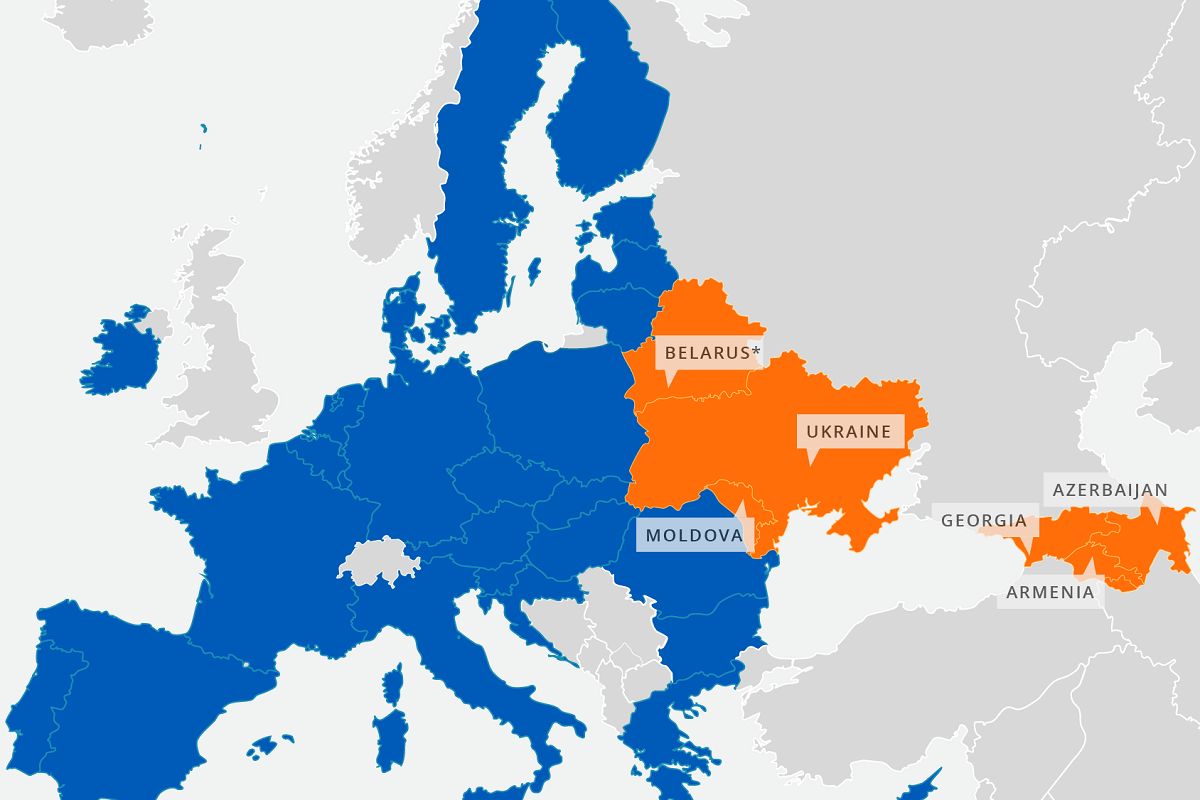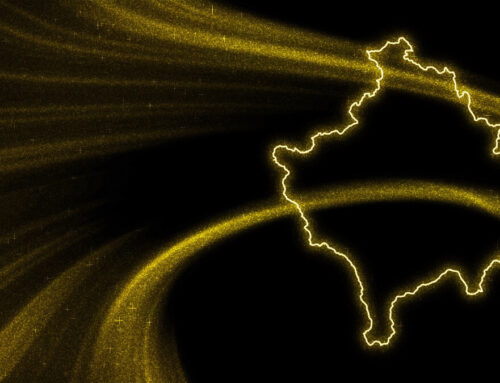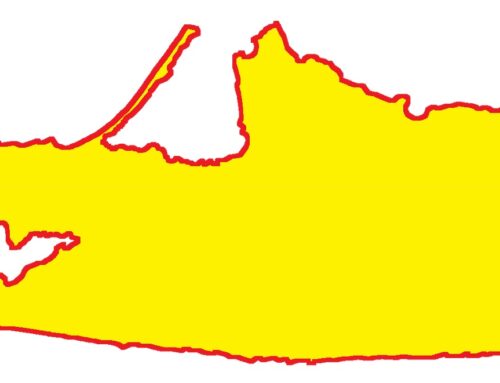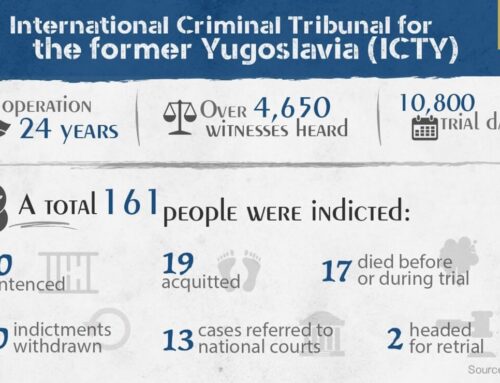Dionis Cenuşa
“The positive dynamics in 2022 will be determined by the maintenance of a political will favorable to reforms in some states of the EaP, but also by the interest of the EU in generating geopolitical autonomy in the EaP through the development of local state resilience capacities...“
The dynamics of events in the Eastern Partnership (EaP) states will be dictated in 2022 by the quality of internal reforms and the effects of geopolitical competition, in an extremely complicated security, pandemic and energy context. As demonstrated by the wave of Kazakh protests in early January, the democratization of the political system and the quality of governance reflected in the accessibility of services and goods by large segments of the population (Bloomberg, January 2022) are equally important to society. Political regimes cannot be attractive just because they offer freedoms, but if, in addition to freedoms and rights, they guarantee social equity and economic well-being. Both pro-democracy political regimes and those entrenched in authoritarian EaP practices will feel increasing public pressure if living standards do not improve in practice. In this context, the efficiency and results of the reforms will determine the trajectory of the events in 2/3 of the EaP states and the public support for the associated governments involved in the European integration processes and/or pursuing a robust reform agenda – Armenia, Georgia, Moldova and Ukraine. The situation in Georgia and Belarus will be cause for concern. In the first case, due to the degradation of democratic institutions and, in the second, because the authoritarian regime wants to deepen its roots at the constitutional level. Unlike other states, Azerbaijan continues to enjoy a kind of geopolitical immunity from Western forces, who value Azerbaijan’s energy potential and, for now, tolerate its authoritarian composition.
From a geopolitical perspective, the West will try to demonstrate unity against Russian revisionism, an effort that could lead to a new wave of sanctions against Russia, from blocking the Nord Stream 2 pipeline to targeting sovereign debt and, more recently, imposing technological sanctions (New York Times, January 2022). The year 2022 will not exactly favor a normalization of the EU’s relations with Russia. The reason for the tensions between them is the diametrically opposed positions towards the future of Ukraine, but also of the entire region. In between there are two models of civilizational development: one based on sovereignty, the rule of law and the integration in the EU and another one predicated on the Eurasian autocracy with small liberal elements and a strong veto on Moscow’s foreign policy. If the “traffic light” coalition in Germany does not implement the part on Russia of the governing agreement (IPN, December 2021), and the French elections result in a victory for Eurosceptics, then the EU’s position on Moscow could gain some new touches. Such a situation could lead to fragmentation, diversification and softening of approaches within the EU towards Russia. This scenario could give rise to new episodes of nationalization of foreign policy or de-Europeanization (of a sectoral and temporary nature), as is the case of the migration crisis caused by the Alexander Lukashenko regime (IPN, November 2021). The latter pushed Poland to act unilaterally and independently of the EU to protect its eastern borders. In any case, the situation in the EaP will remain relatively volatile, due to the overlap of the security crisis related to Russian threats against Ukraine, energy market deviations and the consequences of the spread of new variants of COVID-19.
The seven forecasts for the Eastern Partnership
As in the case of the estimates set for 2021 (IPN, January 2021), the forecasts for 2022 reflect political fluctuations within the states of the region and changes in power relations between nearby centers of geopolitical influence.
1. The reform of the rule of law will demonstrate whether or not European integration can be accelerated. Moldova is in the most favorable position to initiate reforms, because the government has at its disposal all the political instruments (parliamentary majority and monolithic power) and a (still) relatively high popularity (around 40%, at the end of 2021). Such a favorable context allows radical reforms in the field of justice (evaluation of prosecutors and judges), whose success will depend on ensuring an impeccable level of transparency in decision-making and the non-interference of the political factor. Reform of the rule of law will be critical for Ukraine, which already has the institutional architecture to clean up the judiciary and corrupt public officials. In addition to the full restoration of anti-corruption policies, Kyiv will have to diligently implement the anti-oligarchic legislation adopted in 2021 (RBC, November 2021) to reduce the influence of informal groups in decision-making (prohibition of financing of political parties) and public sector administration (restricting participation in privatization bids). These are the only EaP countries where reforms have a real chance of progress in 2022. In Georgia, reforms to build an independent judiciary will remain on hold until the ruling party guarantees the political independence of state institutions and judiciary (of oligarchic influences). Armenia could also advance if it launches as soon as possible the national and bilateral institutional mechanism to implement the Comprehensive and Enhanced Partnership Agreement with the EU (in force since March 2021), with a focus on the rule of law and transparency in use of public money. Only in these states can European integration move faster (Moldova, Ukraine) or slower (Georgia, Armenia), depending on how the integrity of the judiciary and the effectiveness of the fight against corruption are improved.
2. The strengthening of the authoritarian regime in Belarus will highlight the ineffectiveness of Western sanctions. The EU has agreed to support civil society (and indirectly the opposition movement) in exile with € 30 million by the end of 2021, having pledged more than € 50 million to civil society in 2020 (RadioFreeEurope, December 2021). If this money begins to be disbursed in 2022, then the cumulative positive effect, resulting from support for the Belarusian democratic movement, could be greater than the EU sanctions adopted so far against the Lukashenko regime. Following the five sanction packages, with the last one introduced in December 2021, the EU sanctioned 183 individuals and 26 entities (EU, December 2021). However, these measures did not deter the Minsk regime, but instead challenged major new challenges in 2021: the forced landing of Ryanair (4978, Athens-Vilnius) and the facilitation of illegal migration to the EU. Following the mitigation of the migration crisis, due to the effective cooperation of the EU with the main countries of transit (Turkey) and of origin (Iraq) and which resulted in EU sanctions, Lukashenko has ordered an embargo on foodstuff groups originating from the EU and other states that sanction Belarus, including those from the Western Balkans (DW, January 2022). Unlike the 2014 Russian counter-sanctions, the Belarusian trade restrictions are mainly aimed at the economies of the Baltic countries (Latvia, Lithuania), from where Belarusian citizens and companies buy or import consumer goods. Another indication that Western sanctions have so far been ineffective is that the Lukashenko regime has dismantled the country’s main NGOs and media, which will continue if the EU sanctions do not become more determined, swift and comprehensive. With the constitutional reform, which is expected to be approved in the first half of 2022, the authoritarian regime will obtain constitutional guarantees. This refers to the granting of immunity to Lukashenko from trials related to past decisions, the legal opportunity for him to rule for at least another 10 years (when Lukashenko turns 77) and the exclusion of the opposition in exile from running for presidential elections (President.gov.by, December 2021).
3. Vaccination of the region’s population could be difficult to achieve at a rate of 70%. One of the objectives of the EU for the EaP countries is to overcome the disadvantage of vaccination. Currently, Azerbaijan and Moldova are showing the best performance in the region, but have not exceeded 50% of the vaccinated population. The problem is not access to vaccines, which are delivered through COVAX, donated bilaterally (EU countries, USA, China, Russia etc.) or bought without outside help. Interest in vaccination is low and could not be increased significantly, even in countries with more democratic regimes, where ruling parties enjoy broad public trust, such as Moldova. Resistance to vaccination is due to disinformation, on the one hand, and poor communication strategies of state institutions, on the other. If the anti-vaccine protests in EU states (Austria, the Netherlands, Germany, Romania, etc.), visible in 2021, come back into force in 2022, their effects could extend beyond the EaP, but to a lesser extent. Widespread corrupt practices in the region make large-scale vaccine protests less likely in the EaP than in the EU. Endemic corruption in Eastern Europe, which also involves the public health sector, is one of the indirect and invisible obstacle on the vaccination process, providing alternative solutions for anti-vaccination groups. For these reasons, the vaccination rate of 70% of the EaP population will be difficult to achieve in 2022. An exception may be Azerbaijan (which already has around 50% of the population vaccinated), where the authoritarian regime appears to be more effective in implementing vaccination policies and may be interested in standing out, including in the pursuit to achieve prestige.
4. The EU will prioritize building resilience over European sectoral integration in the EaP countries. The EU will be interested in increasing local capacity to manage crisis situations. The expansion of crisis-affected areas is slowing down the EU’s capacity to react and increasing the demand for the EU’s international involvement. As a result, for objective reasons, in the medium and long term, the EU will have fewer resources to deal sustainably with the problems of the EaP. For this reason, the EU will use financial assistance instruments for the EaP countries, such as the “Post-2020 Priorities” (with a budget of around € 20 billion of investment) to produce local capacity to address and overcome major vulnerabilities (energy, vaccination, economic recovery, etc.). Therefore, the process of capacitating EaP states in the crisis preparedness area should speed up. The ability of post-Soviet states to act independently under stress requires time and institutional and human resources, which are scarce. However, according to the 2022 overarching documents dedicated to the region, the EU is committed to proposing more practical and better targeted solutions to contribute to the institutional, economic and social resilience of the EaP countries (IPN, December 2021). However, it depends on the degree of political engagement, institutional absorption and structural transformation of the national authorities in the region and the absence of new emergencies on the EU agenda. It could be caused by the human factor (military conflicts in Ukraine or the Western Balkans, artificial migration crisis – Turkey, Belarus, Russia or those produced by the local/regional context – state fragility or failure – Lebanon, Syria, North Africa) or climate change ( natural disasters – floods, droughts, etc. – if they start to have a transboundary impact).
5. Ukraine’s security is becoming a leitmotif in ensuring the security of Europe. While Russia wants “security guarantees” (RIA, December 2021) from the United States and NATO to ensure its relevance among the great powers (by (re)instituting a balance of power), the EU tends to make its concerns heard and taken into account regarding the security architecture in Europe (EEAS, January 2022). The central part of Moscow’s action is to halt the Euro-Atlantic enlargement to the east, with a view to canceling the accession prospects of Ukraine and Georgia. This is the solution with a “positive sum” acceptable to Russia, which is otherwise determined to take drastic measures, including Western officials believe that it is possible to take the form of an invasion of Ukraine in 2022. To find a common denominator and better coordinate sanctions policy, the US seems willing to rule out sanctioning the Nord Stream 2 pipeline, where there are differences with Germany. Instead, scenarios with sanctions on the financial sector are being prepared, such as the decoupling of Russia from the SWIFT financial transaction system (1,100 banks in 200 countries around the world) and produce technological disruptions (New York Times, January 2022). The intention is to discourage a possible assault on Ukraine that the EU increasingly perceives as an indispensable role for European security. The imperative resolution of territorial conflicts in Ukraine becomes a leitmotif in ensuring security on the eastern borders of the EU. Thus, because it is seen “as part of the conflict, not as a mediator”, according to EU Foreign Minister Josep Borrell, Russia is projected as a threat. In any case, in 2022, the escalation of the Russian-Ukrainian conflict is even more likely than the resumption of work on the Normandy Format or the return to the implementation of the Minsk Accords. Russia has already announced what the pretext could be to launch a clear military aggression against Ukraine (avoiding a “genocide” of the ethnic minority in Donbas, of which there is no reliable evidence), but it is not yet clear whether the US, NATO and the EU will impose sanctions to prevent aggression against Ukraine or punish it post-factum.
6. The French presidential elections and the cohesion of the German coalition will influence the actions of the EU towards Russia. The political situation in France and the functioning of the ruling coalition in Germany will play an important role in maintaining cohesion within the EU in policy towards Russia. From the beginning, the agenda of the rotating French presidency in the EU institutions seems to have been affected by the electoral campaign for the presidential elections. For this reason, issues related to the EaP (with the exception of Ukraine) could be overlooked until the Czech Republic assumes the presidency (in the second half of the year), whose critical stance on Russian influence will arouse greater interest for the east neighborhood. With the exception of Ukraine, other EaP countries could lose relevance, as could the entire EaP dimension, which is already at the bottom of the French EU Presidency’s list of foreign policy objectives. Things could get even more complicated if Emmanuel Macron loses the presidential election to Eurosceptics. The combined popularity of far-right politicians Marine Le Pen and Eric Zemmour is 33%, compared to just 25% for Macron (Politico, 2022). Although recent estimates show that Macron’s chances of re-election are high (57% in the second round against Le Pen and more than 50% in the case of other opponents), the mood of protest against vaccines in society could overlap perfectly with the advance of the Eurosceptics during the presidential elections. presidential election. To a lesser extent, the EU’s relations with Russia may go through a process of moderation and an attempt at recovery if the Social Democrats adopt a policy more friendly to Moscow than that agreed in the coalition agreement with the Greens and Liberals (IPN, December 2021). However, both the defeat of Macron and the dissolution of the ruling coalition in Germany should not be completely ruled out.
7. The dysfunctional relations between the EU and Russia will impede the combined efforts to normalize the dialogue between Armenia and Azerbaijan. Even if both Russia and the EU have expressed interest in helping to normalize Armenian-Azerbaijani relations in 2021, this will be impossible if the situation around Ukraine’s security gets out of control. The intervention operation of the Collective Security Treaty Organization (CSTO) to stabilize the situation in Kazakhstan sets a favorable precedent for Armenia, which is participating in the “peacekeeping mission” (Kremlin.ru, January 2022). Based on the Kazakh precedent, Armenia could try to discourage Azerbaijan’s actions on the Armenian borders, where tensions persist due to the lack of delimited and demarcated borders, respectively. To avoid further military clashes in 2022 due to Azerbaijan’s unilateral decisions to unilaterally establish its borders, both Russia and the EU should agree to joint 2 + 2 efforts on border demarcation. However, such a scenario is unlikely due to structural animosities between the two (related to Ukraine). It is not excluded that Russia can act on its own, provided that maintaining “manageable instability” and gradually improving relations between Armenia and Azerbaijan is in Russia’s strategic interest.
In lieu of conclusions…
To understand the projections for the development of the EaP in 2022, one must take into account the priorities of the national governments of the region and the difficulties they are likely to face during the year. In other words, the region may suffer from the importance of problems, produced deliberately or unintentionally as a result of external geopolitical interactions or clashes.
The region will face challenges, many of which began or continue from 2021. The main negative developments will stem from the insecurity generated by the confrontation with the Russian factor or the attempt to coerce it that could have collateral effects for the smaller regional actors. The positive dynamics in 2022 will be determined by the maintenance of a political will favorable to reforms in some states of the EaP, but also by the interest of the EU in generating geopolitical autonomy in the EaP through the development of local state resilience capacities.
This analysis is published for the IPN News Agency. FOMOSO got permission to publish it as well.







Leave A Comment